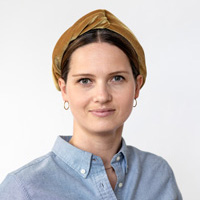Marie Kofod Svensson forsvarer sin ph.d.-afhandling på Institut for Antropologi
 Kandidat
Kandidat
Marie Kofod Svensson, Institut for Antropologi, Københavns Universitet & Hjerteforeningen
Titel
At the Heart of Living In-between: Paradoxes, (In)visibility, and Blurred Futures in Families Living with Congenital Heart Defects
Bedømmelseskomité
- Professor Susan Reynolds Whyte
Københavns Universitet, Danmark (formand) - Professor Myra Bluebond-Langer
UCL GOS Institute of Child Health, United Kingdom - Docent Gitte Wind
Københavns Professionshøjskole, Denmark
Vært
Leder af ph.d.-programmet på Institut for Antropologi, professor Tine Gammeltoft
Tid og sted
Tid: 11. juni 2020, kl. 14:00 (Forsvaret er berammet til at vare maksimalt tre timer). En lille online-reception er planlagt efter forsvaret.
Engelsk resumé
After decades of medical advances and consequently a steep rise in survival rates among children and youth with congenital heart defects (CHDs), this anthropological thesis explores how they and their families (particularly their parents) live with the defects that have now become chronic conditions in many cases. Based on extensive ethnographic fieldwork in the homes of families, at hospitals, and at patient organization events in Denmark, as well as on a systematic review and meta-ethnographic analysis of previous international qualitative research, the thesis suggests that life with CHDs is a matter of living between extremes.
Through three articles, the thesis looks at the struggles and possibilities of life when illness trajectories involve transitions from dramatic open-heart surgeries to everyday life at home and sometimes back again, when CHDs are or are made to be both visible and invisible (on the body, in memory, and in public understandings), and when prognoses are enmeshed in both optimism and uncertainty and ultimately deal with matters of life and death.
The tensions and entanglements of living between such extremes, and the strategies that families use to manage them, are explored by highlighting the chronic paradoxes that international studies collectively show families face (article 1), as well as the extensive (in)visibility work families do in their everyday lives (article 2), and the ongoing prognostic calibrations that they engage in at outpatient encounters (article 3) which became apparent through the ethnographic fieldwork in Denmark. These perspectives are interesting, as CHDs are the most common type of major congenital anomalies, and due to biomedical advances, children, youth, and adults with CHDs have become both a growing and a continuously changing population.
Link til Zoom
Ph.d.-forsvaret kan følges på Zoom.
Linket er åbent en halv time, før forsvaret begynder.
